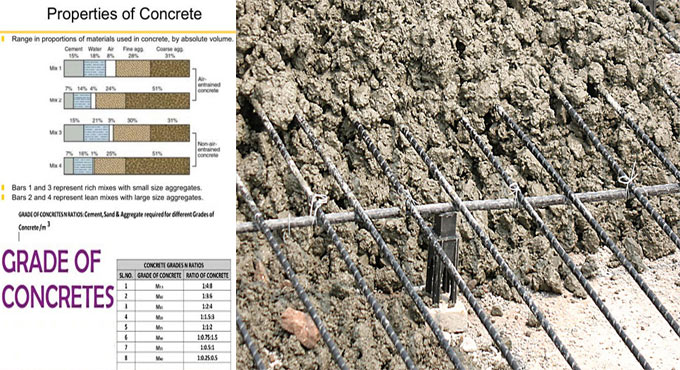
Brief explanation of concrete properties
Concrete stands for a composite material that is formed by blending Cement, sand, aggregates, and water in appropriate ratios. Concrete is a globally recognized building material that is mostly applied in civil engineering construction.
Benefits of using concrete in civil engineering construction:
As compared to other building materials, the concrete is superior because it has the following properties :-
a. Greater compression strength,
b. Adaptability to capture any form and shape,
c. Sound resistance capacity against fire
d. Corrosion Free
e. Least maintenance cost.
It concrete is used along with the reinforced bars in the construction structure, the strength of the structure is increased significantly.
Advantages of adding reinforcement in concrete:
Concrete has sound strength in compression but it is feeble in tension. To get rid of low tensile strength in the concrete, the reinforced bars are added. Therefore, the concrete is fortified with steel, and consequential composite mass is known as Reinforced Cement Concrete.
Reason behind weakness of concrete in tension:
Though concrete is stable in tension, but compressive nature of concrete is stronger than tension by ten times.
Compression force in concrete = 10 x Tension force of Concrete: We know concrete is formed by blending cement, sand, water, and aggregate. Aggregate is very crucial as it bears compressive forces, and leftover mixture (Cement, Sand, Water) performs as glue to unite these aggregates. When any force is employed to a concrete member, this glue transmits compressive stresses from one aggregate to another.
In technical jargon, the glue is known as an Interfacial Transition Zone.
In case the concrete is under tension. The aggregates will detach from each other. The glue that retains the whole system becomes considerably weaker than aggregates.
Because of the applied pull force, the glue that retains various elements of concrete will rupture mutually.
Therefore, under tension, this zone will perform as a weak link and concrete will collapse at a lower force.
Therefore, the steel bars are arranged in concrete for tension requirements as steel contains an equivalent value of compression and tension.
To learn the properties of concrete throughout it?s plastic stage, go through the following link civilread.com/concrete-properties


